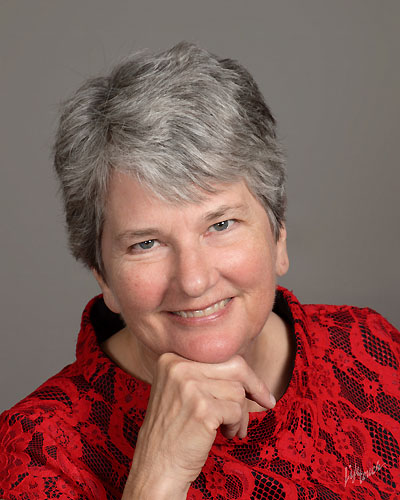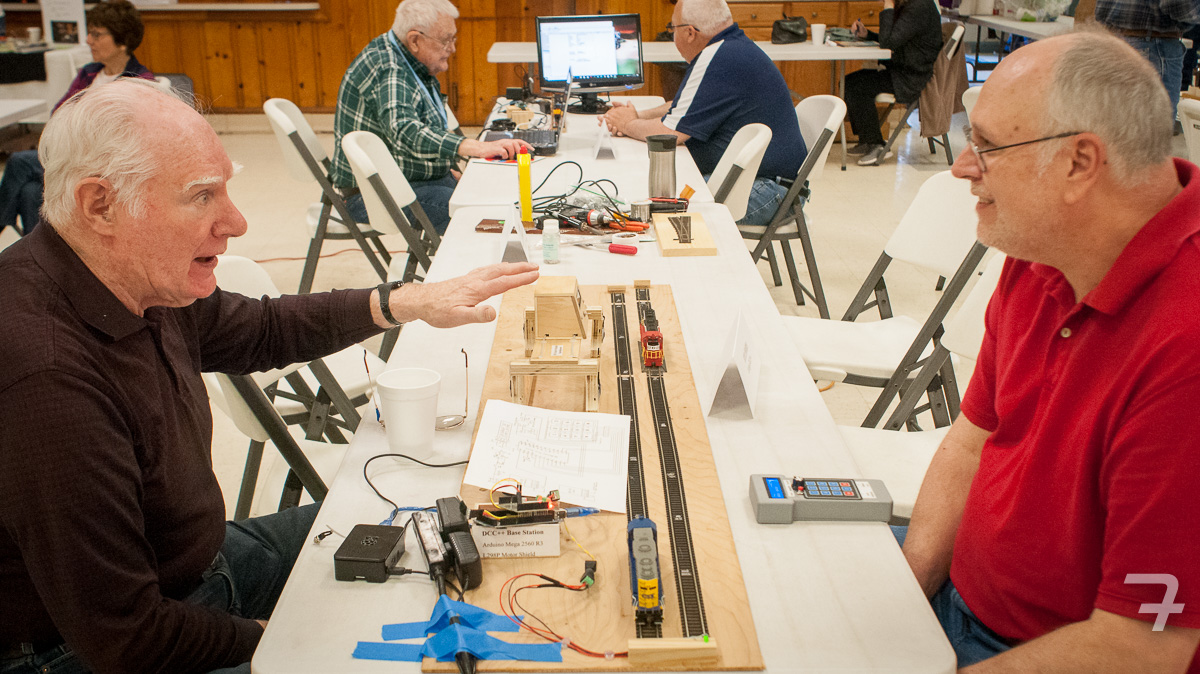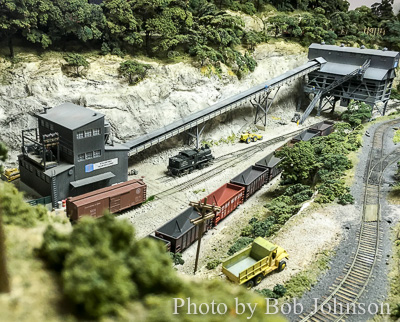
Thank you to those who contacted me about their aspirations in the Achievement Program (AP). look forward to getting your applications. Dave Thalman will receive his Golden Spike later this year and Bob Morningstar is ready to have his electrical application reviewed and scenery judged. I look forward to presenting your awards!
This time I will focus on the requirements for Service to the Hobby/NMRA-Association Volunteer and Model Railroad Setting-Scenery.
[This is part 2. Click here to read part 1. -ed]
Association Volunteer certificate
To qualify for the Association Volunteer certificate, you must:
Serve actively on one or more NMRA committees (National, Region, or Division) and/or as an Officer long enough to accumulate sixty (60) certified time units (TUs). The TUs you receive for various types of service are listed below:
- Active satisfactory service as a National Department Head: 4 TUs per month.
- Active satisfactory service as a National committee Chair/Manager, reporting to a Department Head: 3 TUs per month.
- Active satisfactory service as a Region committee Chair/Manager or a National committee member, or Division Superintendent/President: 2 TUs per month.
- Active satisfactory service as a Region committee member, a Division Officer other than as Division Superintendent/President, or Division Committee Chair/Manager: 1 TU per month.
- Active satisfactory service as a Division committee member or Division board member: 1/2 TU per month.
- Editors of an NMRA publication shall receive credit at the rate appropriate for committee Chairmen at the same level. At least four (4) issues of the publication, edited by the person applying, shall be attached to the SOQ or a URL provided for electronic newsletters before points will be considered for credit.
Note: What constitutes a “committee”?
Basically, just about any office or function that isn’t covered under Association Official. Most other officers in a Division (or Region) are considered Committee Chairs/Managers. For example, if your Division has a person who runs the contest at the monthly meeting, they can be considered the “Contest Committee Manager”, your local AP representative is a member of the “Region AP Committee”, and so on. Conventions (at all levels) are chock full of committees (Only the convention General Manager receives “Committee Manager” points – all others receive “Committee Member” points, even if their title includes the word “Manager”). Individuals who work just the day of the event (for example at the convention registration desk) receive credit for one month’s work as committee members.
- Service as a Division officer (other than Superintendent/President) or Division Director: 1 TU per month.
- Newsletter Editors of 100% NMRA clubs having 10 or more members, may earn one-time unit per issue of the club newsletter (print or electronic), providing it is four pages or more. Four (4) issues of the newsletter, edited by the person applying, must be attached to the SOQ, or a URL provided for electronic newsletters, before the time units will be considered for credit.
(Other club officers, even of 100% NMRA clubs, DO NOT earn Volunteer credits.)
- Official judges at NMRA sponsored model contests (including non-rail) shall be given time units for such service at the contest only (not monthly), as a one-time service credit per contest as follows:
-
- National Contest Judge 3 Time Units
- Region Contest Judge 2 Time Units
- Division Contest Judge 1 Time Unit
- This credit is in addition to any credit that you may receive for being on the committee that works to set up the contest event.
-
- Individuals (and their crews) who open their home or club layout for layout tours or operating sessions in conjunction with NMRA conventions or other NMRA sponsored events earn credit as follows for each day that the layout is open for viewing.
-
- National Event 3 Time Units / day (12 TUs maximum per event)
- Region Event 3 Time Units / day (6 TUs maximum per event)
- Division Event 3 Time Units / day (3 TUs maximum per event)
-
This credit is in addition to any credit that they may receive for being on the committee that works to set up the event.
- Individuals who participate in modular layouts in conjunction with NMRA Division events, or at NMRA sponsored events, earn credit as follows for each day the layout is open for viewing at the event.
-
- National Event 3 Time Units / day (12 TUs maximum per event)
- Region Event 3 Time Units / day (6 TUs maximum per event)
- Division Event 3 Time Units / day (3 TUs maximum per event)
-
This credit is in addition to any credit that they may receive for being on the committee that works to set up the event.
Note: There is generally a maximum of 48 time units credited for any one National convention, 24 time units credited for any one Regional convention, and 6 time units credited for any one Division event.
-
- Boy Scout Railroading Merit Badge Counselors who are NMRA members can earn: 1 TU (time unit) per month plus 1 TU per Scout that qualifies. This credit is retroactive with no time limit for those who have served as counselors in the past provided that they were also NMRA members during the time of service.
- Boy Scout Railroading Merit Badge Counselors who are NMRA members can earn: 1 TU (time unit) per month plus 1 TU per Scout that qualifies. This credit is retroactive with no time limit for those who have served as counselors in the past provided that they were also NMRA members during the time of service.

- A live clinic (above) that is presented more than once earns Association Volunteer credits for each additional (the first presentation is credited toward Author unless the person already holds the Author certificate) presentation at the following schedule:
-
- National Clinic – 3 Time Units
- Regional Clinic – 2 Time Units
- Divisional Clinic – 1 Time Unit
-
- Certification of accomplishment shall be by the Committee Manager (in the case of committee members), or by the appointing officer (in the case of Committee Chairmen). The Region (or National) President or Secretary may certify when the appointing officer is not available or when many positions will require several signatures.
Keep track of your service as you do it: Obtain the Record and Validation form from your AP Manager or online, then fill it out and have it signed at the time of your service. This is much easier than going back and collecting signatures later when you’re ready to apply for your certificate.
- Submit a completed Statement of Qualification (SOQ) itemizing evidence of completion of the above requirements, along with the signed record of service.
Note: The Association Volunteer SOQ may be initiated by others.
Association Volunteer Award recipients in the South Mountain Division:
Jay Beckham, Bruce Blackwood, Jane Clarke, Pete Clarke, Richard Daniels, Steve Green, Bob Johnson, Richard Lind, Dennis Masters, Mary Miller, and Bill Miller.
In my case, I earned the maximum number of TU as chair of the 2009 MER Convention in Hagerstown. Additional points were from hosting divisional meetings and service as the divisional
AP chair. As you have probably found out, the years fly by; therefore, the points add up.
Model Railroad Setting-Scenery
To Qualify for the Master Builder – Scenery Certificate you must:
- Construct a completed section of a model railroad of at least sixty square feet in O scale, or forty-five square feet in S scale, or thirty-two square feet in HO scale, or eighteen square feet in N scale or other scales in proportional relationship to HO scale. This completed section must contain the necessary scenic elements of Terrain, Structures, Background, Lighting, and Realism/Conformity as combined to achieve a realistic effect using applicable NMRA standards. in that particular model railroad scene. The intent of this category is the prototypical rendering of the scenic elements from the ground up.
It is not necessary to qualify for this certificate by constructing a single section of layout. You can construct several different scenes (such as modules), each of which must be at least eight square feet and
of Merit Award quality. They must earn 87 ½ points using the AP Scenery judging sheet.
Outdoor (garden) railways may qualify for the Master Builder – Scenery certificate. However, the modeler must show that they have worked to create a miniature railroad, not just run some track through the flower beds. For example, bridges should be modeled after prototype bridges (just as they are in other scales), not just track running across a plank.
The definitions of the various elements (which may be combined to comprise the setting for the model railroad) shall be:
Terrain (35 pts)
The ground and all natural features such as rocks, water, trees, hills and depressions, as well as man-made features such as railroad roadbed, cuts, fills, drainage ditches, embankments, streets and roads, etc.
Also remember different types of vegetation and the effects of weather and of animals. Remember the detail on streets and roads, whether in urban or rural areas: sewers / storm drains, man-hole covers, shoulders, drainage ditches, cracks, patches, road wear marks, oil stains, and tire ruts in dirt roads.
Make the transitions between different types of terrain as smooth as possible. Avoid glaring inconsistencies, such as a New England Farm house surrounded by palm trees. If you are going to have different scenes on your layout, use backdrop dividers or other vision blockers to separate them.
Structures (20 pts)
Structures are considered from the standpoint of prototypical suitability, placement, and appearance as scenic effects – NOT as to construction (which is covered under Master Builder – Structures). This includes bridges, trestles, and culverts, buildings and all other types of structures (towers, power lines, signs, fences, retaining walls, etc.), track and right-of-way features such as turnout controls, signaling structures, crossing gates and shanties, turntables and other service structures, etc.
These are but a few examples – additional features are encouraged. Also remember that structures should be in the ground, not sitting on top of it. Make sure that the appearance of your structures is consistent with your scenery. At the very least, weather it enough to take the “out of the box plastic shine” off of it. Switch machines, if not under the table, should be well disguised (this is one detail that will cause your application to be returned if it is not done). Remember details such as lights over the doors of commercial buildings.
Background (25 pts)
Treatment of the wall, backdrop, and/or ceiling to realistically depict depth, distance, horizon, and sky.
This doesn’t mean that you have to have a photographic or landscape artist quality background. Your background should continue the ‘illusion of reality ‘ that you are trying to create with your scenery. The background should match the scenery, and the transition where the two of them meet is smooth and/or hidden. One good question to ask yourself is: Is there enough good background to allow a photo to be taken without showing other parts of the room? If a wall is the backdrop, make sure that the texture is appropriate, as well as the color (a concrete block wall painted sky-blue, still looks like a concrete block wall!)
Lighting (20 pts)
Illumination effects from three aspects:
An entirely daylight scene is acceptable. This lighting information must be included in the material prepared for Section 4 below.
Note that a fully day lit scene is perfectly acceptable (although you may get more points for a scene that allows you to show off more lighting elements). However, even in a day lit scene, there may be evidence of lighting – even if it is not operational (non-illuminated street lights, for example.)
Also note that not every scene will contain all of these elements.
If the scene you are modeling is in the middle of the desert, there may not be any buildings or streets there to light!
Realism / Conformity (25 pts)
In the other four judging areas, the judges evaluate what you were trying to do – what you remembered to include in your scene. In this one, they evaluate how well you did what you were trying to do.
Your entire layout does not have to be completed to be judged – just enough to meet the minimum space requirements given above. However, the areas which are not to be judged should be blocked off (visually) from those that are.
- Prepare a set of photographs (a recorded presentation is acceptable) and a written description clearly describing the intended setting of the model railroad and the scenic details including towns or cities in the area being judged.
These photos don’t have to be professional quality – that isn’t what is being judged. However, there should be at least one over-all picture of the layout, and pictures of all the parts which are being judged. Each picture should have an accompanying description.
- Prepare a description of the materials and methods of construction used in creating various features of Terrain, Background, and Lighting.
These can be simple statements – nothing elaborate is required.
- Attach one copy of materials in Sections 2 & 3 to the Statement of Qualification (SOQ, see below) for use by the judges in determining the effectiveness of the craftsmanship displayed by the member requesting certification.
- Earn a Merit Award of at least 87 ½ points on the section of layout being judged.
- Submit a completed Statement of Qualifications (SOQ) including the attachments for Sections 2 & 3 and the signed merit judging forms and/or copies of the Merit Award certificates from Section 5.
Master Builder-Scenery Award recipients in the South Mountain Division:
Bob Beecher, Bob Hazard, Bob Johnson, Mary Miller, and Bill Miller.
As the division AP Chair, my job is to encourage participation in the program, answer your questions, and help with your paperwork, if necessary. You can contact me at: jjclarke57@gmail.com or 301-253-4913.

